#aztec god
Explore tagged Tumblr posts
Text

Found in Mexico City in 1969 this stone sculpture of a dancing spider monkey wearing the wind conch shell and wind mask and is sitting in a serpent he's holding on his back.
Currently at the MET in New York.
At the end of the of the second age Quetzalcoatl let loose the
hurricanes and the winds blew all the people away. Some hung on to trees and they were turned into monkeys.
Monkeys also are connected with Xochipilli/Macuilxochitl.
13 notes
·
View notes
Text


8. Element
They are a Bismuth Aztec god inspired by Tlaltecuhtli!
#MAYBE MY FAVE SO FAR#dont draw bismuth btw guys it sucksss#30characterdesigns#30 character designs#30 day art challange#art challenge#30 day art challenge#30 day challenge#digital art#aztec#aztec mythology#aztec god#Tlaltecuhtli#bismuth#element#nonbinary#nonbinary character#commission#commissions#commissions open
10 notes
·
View notes
Text
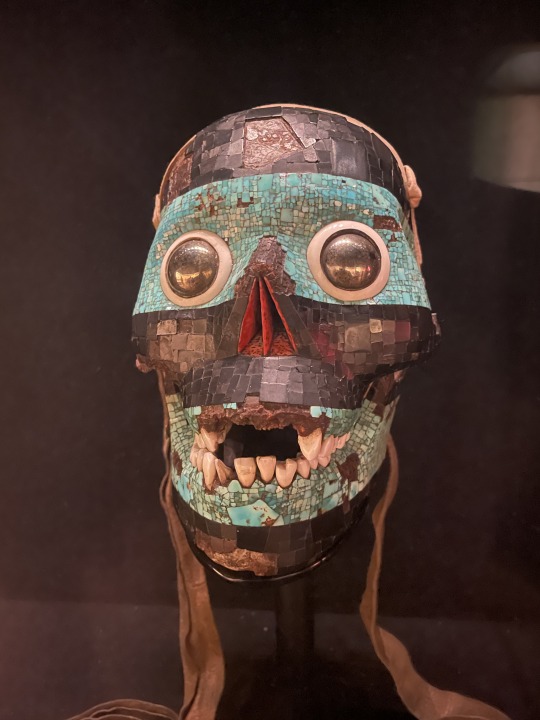
#Aztec#Mexican history#Native America#mosaic#turquoise#mask of Tezcatlipoca#Aztec god#British Museum#London#England
20 notes
·
View notes
Text

Manteño Stone Seat Manabi, Ecuador c. 500 - 1500 AD
#ancient art#ancient history#archaeology#pre-columbian#art history#artifacts#inca#aztec#mayan#south america#Ecuador#ancient stone#aztec god
2 notes
·
View notes
Text

#culture#aztec culture#tlāloc#tlaloc#aztec god#rain#earth#fertility#water#mexican culture#ancient mexico
4 notes
·
View notes
Text
Cold winter: Tezcatlipoca
TEZCATLIPOCA
Category: Aztec mythology
Tezcatlipoca is one of the main gods of the Aztec pantheon, and one of the four deities known collectively as the “Tezcatlipocas” (Tezcatlipoca proper being the Black Tezcatlipoca, ruler of the North). He was also known by several other names such as Titlacauan (We are his slaves), Ipalnemoani (He by whom we live), Ome Acatl (Two reed), Yohualli Ehecalt (Night wind), Necoc Yaotl (Enemy of both sides), Tloque Nahuaque (Lord of the near and the night), or Ilhuicahua Tlalticpaque (Possessor of the sky and earth). As you can tell by these various titles, he was a pretty ominous guy.
I) Attributes
As his title indicates, Tezcatlipoca was renowned for being a god associated with the color black, either with his body being black, or by having black lines of paint over his face (alongside yellow lines). He typically was depicted wearing a loincloth, knotted sandals, armbands, and a headdress made of heron feathers (with sometimes tinker bells around his ankles or neck). Tezcatlipoca is also usually seen holding several different items: arrows, a spear, a fan of feathers surrounding a mirror, or a shield with on it a ball of either feather or cotton.
One of the key features of Tezcatlipoca is that he only has one full leg, his right foot rather being replaced by either a snake, a bone, or an obsidian mirror. Interestingly, sometimes the obsidian mirror wasn’t replacing his missing feet, but rather attached to his chest, with smoke rising from it. Other depictions (and interpretations of this depiction) keep the idea of a disc strapped to the god’s chest, but lean more towards some sort of talisman carved out of abalone shell. But the idea of a smoking obsidian mirror is very interesting because Tezcatlipoca’s very name means… “smoking mirror”. And the reason his mirror is always obsidian, beyond the fact that obsidian was Tezcatlipoca’s sacred material, is… simply because Aztec mirrors were made of obsidian. That’s it. BUT mirrors in the Aztec society weren’t just every day item, they were rather used for specific prophetic rituals. Which is why, through his mirror, Tezcatlipoca is both the god of obsidian and the god of divination.
In fact the full list of Tezcatlipoca’s domain is actually pretty long, ranging from neutral things (rulership, sorcery, divination, north) to natural elements (obsidian, the night sky, night winds, the earth) – but most of his attributes were actually negative or downright evil. He was the god of hostility and discord, the patron of temptation and conflict, as well as the deity of the hurricanes. His only positive traits being that he was also a god of beauty, and a god of war. (Note: For the Aztecs, war is life. Literally. They had a mentality similar to the Norse where war was a beautiful, honorable thing on which their society relied and that they hoped to die in to get into paradise) Tezcatlipoca’s duality is well manifested in the various songs and prayers to him that honor the deity as “the Giver of Life”, “a poet and a scribe” – but more importantly as “the creator and the destroyer of the world”.
As with all the Aztec gods, Tezcatlipoca had a totem animal, and his was the jaguar. In fact, the jaguar deity known as Tepeyollotl was simply interpreted as being Tezcatlipoca when he manifested in his “jaguar aspect”.
II) Myths
Tezcatlipoca was thought to be one of the four sons of the primordial divine couple, Ometecuhtli and Omecihuatl, alongside the other three “Tezcatlipocas”: Xipe Totec, the Red Tezcatlipoca, Huitzilopochtli the Blue Tezcatlipoca, and Quetzalcoatl the White Tezcatlipoca. And the latter was known in texts as the regular enemy of Tezcatlipoca: the Black and the White god were renowned as bitter rivals constantly fighting with each other.
There are two main legends concerning Tezcatlipoca, both being creation-myths retelling the origins of the world.
The first is the legend of Cipactli. According to this legend, before the world was created it was only a vast sea inhabited by a monstrous entity known as Cipactli. Quetzalcoatl and Tezcatlipoca teamed up to create a world, but they could not do it as long as the destructive sea monster was there, so the gods planned to get rid of her. Tezcatlipoca plunged his right foot into the sea, for Cipactli was known to be eternally hungry – and the creature took the bait by eating the god’s foot, but this led to her capture. The two gods then distorted and reshaped the monster’s body so that it would become the land and continents we know today, before creating humanity to populate their new world. And ever since this day Tezcatlipoca is a one-foot god, while humanity brings offering to Cipactli – for while distorted, reshaped and immobilized, the monster is still alive and in pain, and when it groans or shakes it causes earthquakes humans must appease with food, to satiate her eternal hunger.
The second myth is much more well-known and famous: it is the Five Suns myth. According to this legend, there were five different world that existed one after another – each called a “Sun”, because the lifespan of a world was tied to the one of its sun. According to some traditions, when a god created a world he became the “Sun” of it – but other versions of the myth rather claim that each world was created collectively by all the gods, before they chose one specific deity to become its sun and bring light to it. All in all we know that Tezcatlipoca was the first sun of the first world, where men were renowned for their gigantic heights – but as it turns out he was a bad sun. Some say it was because he was a god of night and darkness, others say it was because he missed a foot, but overall he produced a dim, half-light and was a very poor sun, so Quetzalcoatl, unsatisfied with his brother’s job, knocked him out of the sky with a stone club. It created an endless night, and Tezcatlipoca was so enraged at being fired from his job that he ordered all of the jaguars in the world to devour humanity (or he himself turned into a gigantic jaguar to destroy the world in a fit of rage) – and so the first world ended.
Afterward Tezcatlipoca ended up playing a role in each of the future suns demises, probably jealous and bitter at the whole “first sun” ordeal. When Quetzalcoatl became the second sun, he loved too much his humans and pampered them, leading them to become uncivilized, bestial and unreligious. Tezcatlipoca, acting as a force of “authority and judgement” quickly stepped in to settle the matter. Some versions say he used his sorcery to turn all the humans into monkeys, and Quetzalcoatl, angry, send a huge wind to wipe off the surface of the earth and end his world ; others claim that rather Tezcatlipoca forced Quetzalcoatl to create a huge hurricane to destroy his world, while the few surviving humans naturally devolved into monkeys. When Tlaloc, the god of rain, became the third sun, Tezcatlipoca used a sly plan – he seduced and stole away Tlaloc’s wife, the goddess Xochiquetzal, and out of grief Tlaloc stopped all rain. As humanity begged him constantly to make it rain, he grew angry and in an outburst of rage caused a rain of fire that burned all of the world away – the few surviving humans becoming birds. When a fourth world was created out of the third’s ashes, Chalchihuitlicue the goddess of water became its sun – but Tezcatlipoca accused her of putting the façade of a loving goddess in front of her “true” selfishness, to be an hypocrite faking kindness merely to be praised by humanity. These harsh accusations hurt the actually very kind goddess, who cried blood for many years, her tears causing an enormous flood that destroyed the fourth world, with the few remaining survivors becoming fishes.
The only world/sun Tezcatlipoca hasn’t touched or destroyed yet is the Fifth, the one we live in today, the sun of the god Huitzilopochtli. Or at least… he hasn’t tried yet.
III) Worship
The festival of Tezcatlipoca was called Toxcatl, and held in what we know today as the month of May. Each Toxcatl festival a young man was selected to become an ixiptlatli (an “impersonator” that is to say a form of actor embodying and representing a god for ritual purpose) – usually a war prisoner and a warrior (though sometimes slaves were bought, even though they had to be bathed by priests to be free of impurities). Throughout the year the Tezcatlipoca-impersonator would parade in the streets of Tenochtitlan (Aztec empire capital) in a Tezcatlipoca outfit (skin painted black, precious jewelry, embroidered cotton clothes, snail-shell lip pendant, headdress of eagle feathers, bracelets of turquoise and golden bells at his ankles) and be treated with outmost reverence as if he was the god himself. He was taught courtly speech, the art of singing, and how to play a flute, because his activities were to play the flute, smoke tobacco, burn copal incense and smell flowers everywhere he went. The impersonator would regularly be adorned by the Aztec emperor himself, and in the month previous to the next Toxcalt the impersonator would be wed to four maidens embodying four different goddesses (Xochiquetzal, Xilonen, Huixtocihuatl and Atlatonan). He lived with them for twenty whole days, and it should be noted that before this wedding the impersonator was to follow a strict rule of abstinence.
The week before the next Toxcalt the fake-Tezcatlipoca spent his days singing, dancing and feasting as merrily as he could, and four days before the next Toxcalt he would parade with his wife through the streets. On the next Toxcalt the group would travel by a small boat to a sacred island, where the fake Tezcatlipoca would leave his wives at a temple before climbing the stair of a pyramid – breaking a flute with each step. At the top of the pyramid, he was laid on a sacrificial stone and there ritualistically killed: his chest opened with an obsidian dagger to remove his heart, his head cut off so that his skull could be displayed, his body flayed, and finally his flesh given to eat to the nobles of the city. Then, a part of the god’s flesh was given to another young male war-captive, who also wore the skin of the impersonator, and thus he was to become the next ixiptlatli of Tezcatlipoca for a whole new year.
This festival was a BIG thing in the Aztec empire: all throughout it people prepared offerings of food and flowers for the gods, and many dances were performed that involved lot of “kissing and playing between men and women”: men danced the “dance of the snake”, women danced “the dance of the grilled corn”, and when presenting offerings people did “the leap of Toxcatl”. We also known that after these dances, participants to the festival were usually to receive ritualistic scars by the priests of Tezcatlipoca.
This whole sacrificial festival was seen as something of outmost importance for the nobility because Tezcatlipoca was seen as the patron deity of the royal house, and so each Aztec ruler had to be very faithful to him, with numerous hymns having the emperor comparing himself to a “blind, deaf imbecile” or an “excrement” in front of the “lord of the night and the wind who is our master”, and other texts identifying Aztec rulers as mere vessels expressing the god’s will and speaking with the god’s voice. Similarly, the Tezcatlipoca impersonator was always described as climbing the sacrificial staircase with “dignity and pride” because being killed in this ritual was seen as a great honor. The entire ceremony has been interpreted in numerous ways by scholars, with unsure and conflicting theories – the most common being that this ritual was a form of renewal ritual that could mean the chance of seasons or the cycle of deaths and rebirths ; others reject the idea that the festival was held in May and rather see it as a fall festival for the harvest celebration ; some argue it was simply a grandiose sacrifice offered by the Aztec ruler to the very god of rulership to maintain his power to dominate the empire ; and people have pointed out a possible interpretation of the “twenty days of sexuality culminating in a sacrifice” after one year of abstinence symbolized a period of fertility at the end of a drought.
- - - - -
Another genealogy I haven’t talked about claims that the four Tezcatlipocas were born out of another primordial Aztec goddess, Coatlicue (you might know her as the two-snakes-headed lady) – in the myth Quetzalcoatl was her firstborn, alongside his twin Xolotl, born of the goddess as she was still a virgin ; Tezcatlipoca only being born second, fathered by… an obsidian knife. Then following the Tzitzmitil, the gods of the stars, and finally Huitzilopochtli, the god of the sun, born out of a… ball of feathers. Similarly the creation myths I detailed above have several variants : for example, while some claim in the Cipactli legend that only Quetzalcoatl and Tezcatlipoca did the “creating the world” business, others talk of them as merely being responsible for the “fishing” of the primordial sea-monster, and binding it outside of the water, while the whole “reshaping her body into the land” was done by their brothers, Xipe Totec and Huitzilopochtli. A third yet claims that Tezcatlipoca did the whole “capturing Cipactli” alone, and that it was him who alone dismembered the hungry water creature to create the land (hence his title as god of the earth).
A small note for a deity connected to Tezcatlipoca: Tepeyollotl, an Aztec god whose name means “heart of the mountains” or “mountain-heart”. He was the god of the “eighth hour of the night”, usually depicted as a jaguar leaping towards the sun or as a jaguar-skin-wearing man with crossed eyes and a white staff ornated with green feathers. He was a spirit of dark caves, echoes and earthquakes and… despite the two being identified as different deities, he also seems to have been Tezcatlipoca. Several texts imply that Tepeyollotl was the identity Tezcatlipoca took when he put on the skin of a jaguar or turned into a jaguar, thus this being his “jaguar counterpart” (or his *cough cough* furry persona *cough cough). Other rather point out that Tepeyollotl might have been intended to be a fake identity or disguise in-universe, that Tezcatlipoca used to trick and deceive other people.
13 notes
·
View notes
Photo
You see a lot of beautiful and peaceful gods of spring and out of nowhere you see xipe totec the flayed god lol



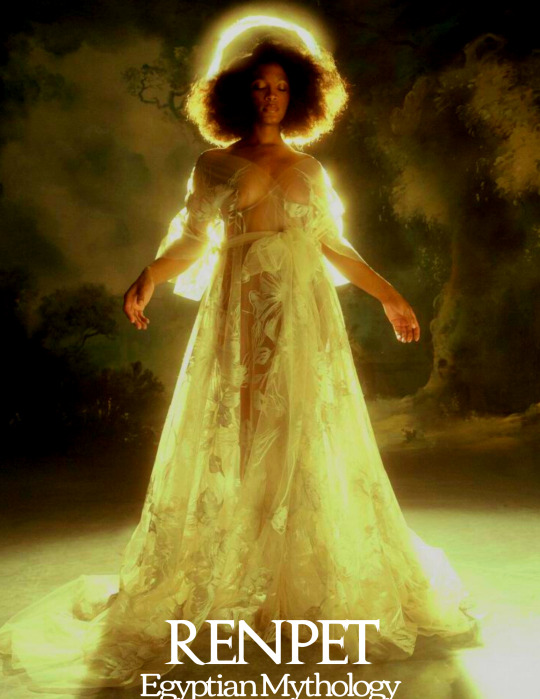
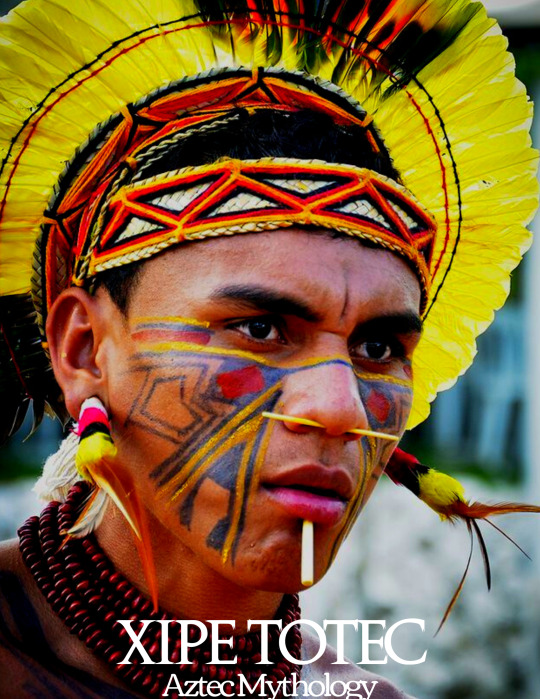
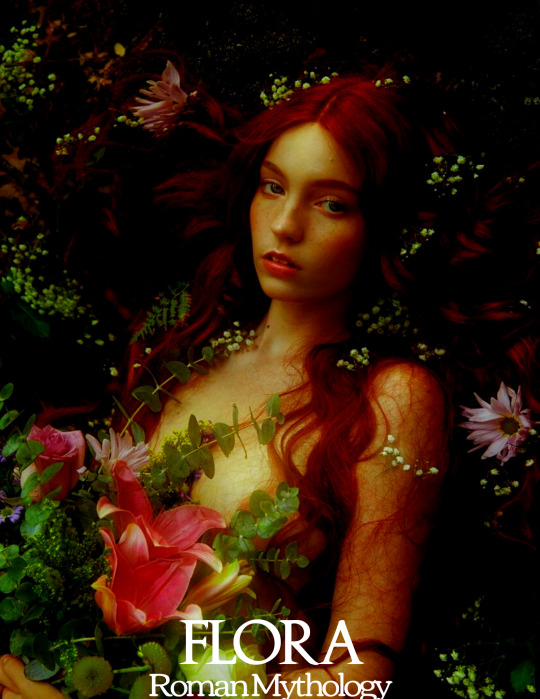
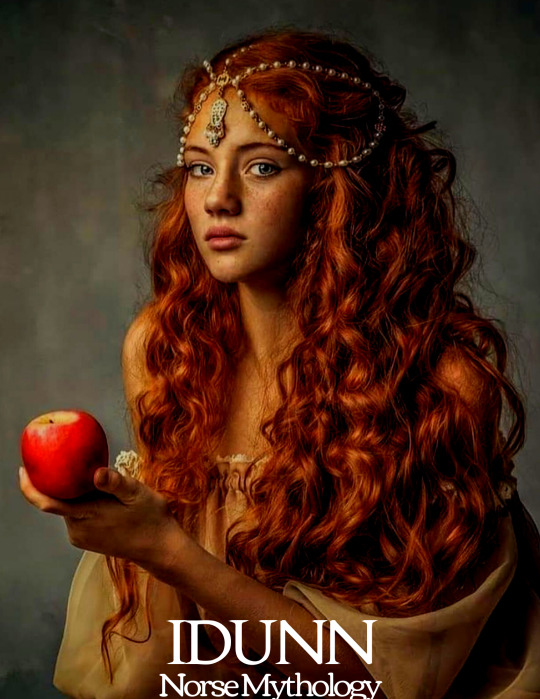

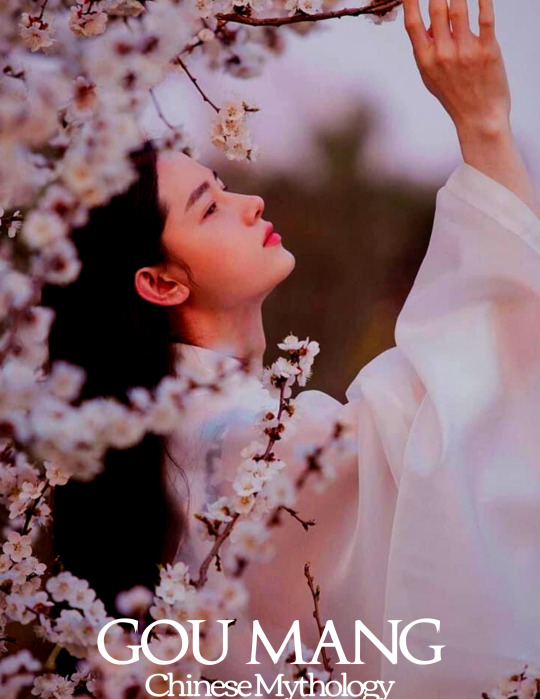

mythologies: spring deities
2K notes
·
View notes
Text
THE FLYING SERPENT Reviews and free on Plex, Tubi and YouTube
‘Relic of an ancient terror born a billion years ago!’ The Flying Serpent is a 1945 American horror film about a demented archaeologist who discovers a living, breathing serpent creature. The movie was directed by Sam Newfield [as Sherman Scott] from a screenplay by John T. Neville. The Producers Releasing Corporation (PRC) production stars George Zucco, Ralph Lewis, Hope Kramer, Eddie Acuff,…

View On WordPress
#1946#Aztec god#free on Plex#free on Tubi#free on YouTube#free online#George Zucco#Henry Hall#movie film#Quetzalcoatl#Ralph Lewis#Sam Newfield#The Flying Serpent
0 notes
Text
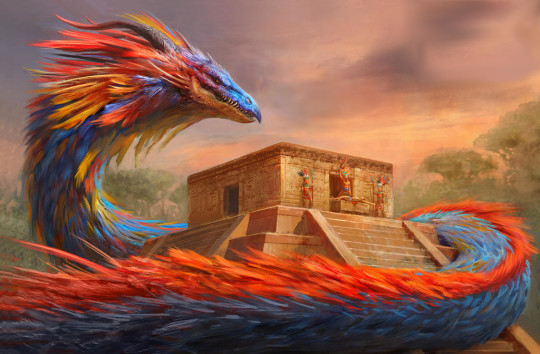
#quetzalcoatl#feathered serpent#art#mesoamerica#mesoamerican#mythical creatures#mythology#snake#snakes#serpent#serpents#religion#deity#aztec gods#aztec#aztec mythology#aztecs#mexico#dragon#dragons#mexica#aztec empire#architecture
277 notes
·
View notes
Text
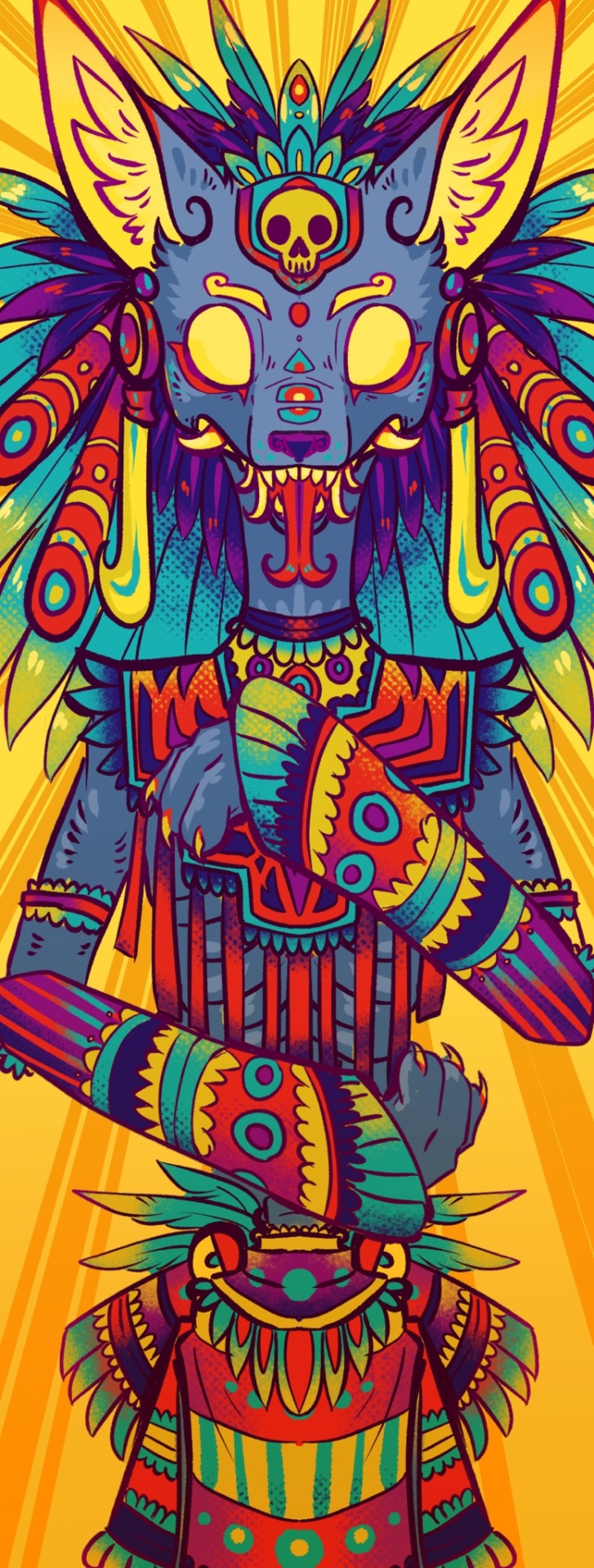
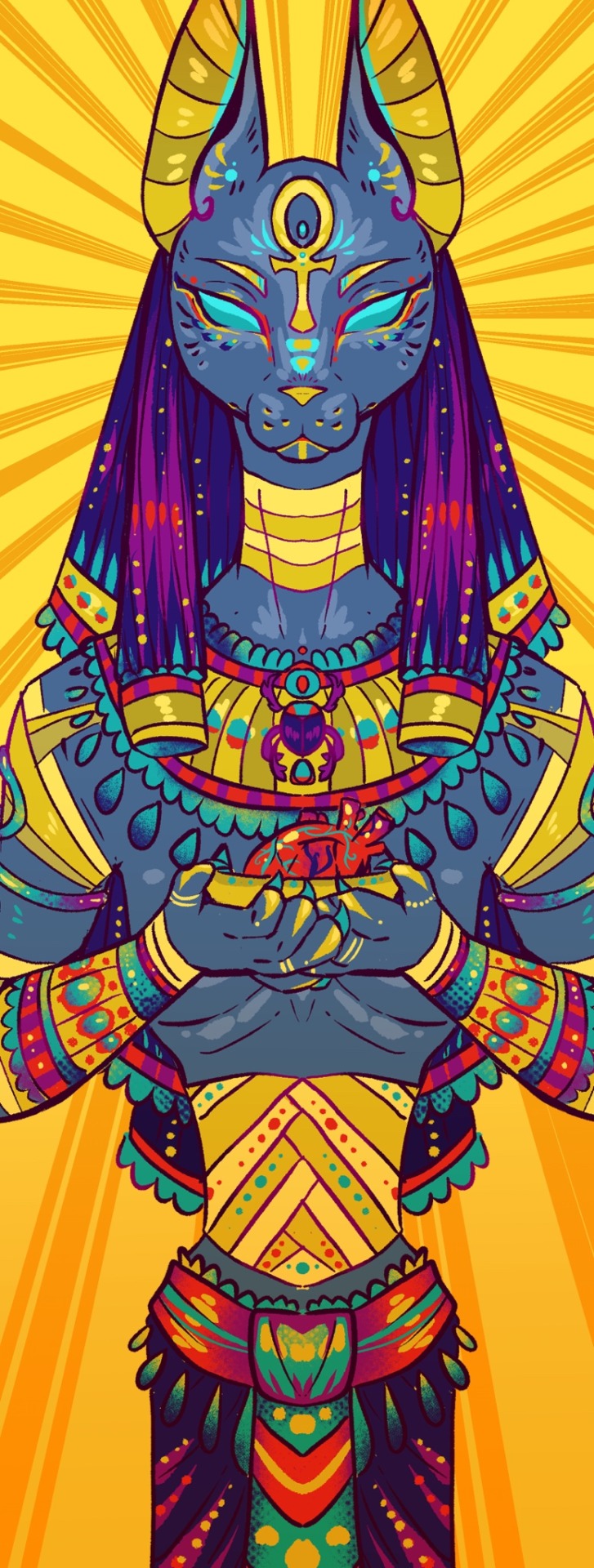
Dog gods
Half of my illustration and design final
#mythology#egyptian#ancient egypt#egyptian mythology#god anubis#Anubis#aztec mythology#aztec#mexica#aztec gods#xolotl#xolo dog#indigenous art#anthro furry#anthro#animal gods#furry
715 notes
·
View notes
Text

𝕾𝖆𝖓𝖙𝖆 𝕸𝖚𝖊𝖗𝖙𝖊: 𝔖𝔞𝔦𝔫𝔱 𝔬𝔣 𝔱𝔥𝔢 𝔇𝔢𝔞𝔱𝔥 𝔞𝔫𝔡 𝔊𝔬𝔡𝔡𝔢𝔰𝔰 𝔬𝔣 𝔱𝔥𝔢 𝔇𝔢𝔞𝔡
When it comes to death, there are many variations of gods that come to our mind from different cultures, since this process is an inevitable and crucial part of all our lives notwithstanding our ethnicity, race, social status, religious beliefs, etc.
Most of us heard about one such deity: Santa Muerte, who is commonly known as a folk saint and is closely associated with Mexican el Día de Muertos or Day of the Dead. Usually she is depicted as a skeleton with traditional feminine features, long hair, flower wreath and in a bright dress.
Despite her status among Spanish Catholics, the catholic church doesn’t accept her as an official saint since some other figures play this role in catholicism, as well as Santa Muerte’s eerie connections with witchcraft and narco cartels don’t quite fit Christian morals.
But what do we know about the origin of the Mother of Death?

Origin
Although Santa Muerte is an unofficial catholic saint, her roots are more complex than they seem and aren’t limited by her status among Spanish Catholics.
There are a few main theories of where Santa Muerte comes from:
Aztec death deity Mictecacihuatl
Figure of Grim Reaper during Black Death
African death goddesses
And more others.
But there is no general agreement on which one is true. It can be confusing, but at the same time, it allows us to analyze and define the truth for ourselves.
Still there is one most popular theory which is related to Aztec beliefs.
Aztec death goddess
As we know, Santa Muerte has the most popularity in Mexico. From the history overview, the Valley of Mexico was earlier the Aztec home before the conquest of this land by the Spanish in the early 16th century.
Before Mexican el Día de Muertos, the Aztecs had their own celebration connected to several death gods: Mictecacihuatl and Mictlantecuhtli. Few principal gods were represented as female (Mictecacihuatl) and male (Mictlantecuhtli) embodiments of death and rulers of Mictlan (underworld).
!For the remark: they are not the only ones, there was goddess Tonantzin as well, but she is related to the other catholic figure.
One of the theories is that Mictecacihuatl and Santa Muerte are the same deity because the Spanish had to accept some Aztec customs due to their cooperation. Also, Mictecacihuatl was a dominant death deity in the Aztec pantheon, so it was important to save her figure even under a different name.

Many faces of Mother of Death
Apart from Santa Muerte’s grim image and direct relation to death, she is patient with the newbies and her devotees and has a pleasant presence and nurturing nature.
Like all deities, Lady of Death is versatile and can be both gentle and destructive. Don’t be surprised to learn that she has a strong connection with drug traffickers and many of them honour this goddess so she gives them protection and prosperity.
Another feature is that Mother of Death accepts all people since death doesn’t care about your social status, sexual orientation, colour of skin, gender, and any other things. She is a protector of those who are rejected by society and helps them to stay safe and find their way in life.
But you need to keep in mind that she should be respected as any other deity and she won’t forgive your ignorance or rudeness towards her.

How to start working with Santa Muerte
As many of us know, it is important to understand which aspects have certain deities when we start working with them. It helps us to figure out for what purposes we can contact them.
Santa Muerte is an universal goddess who has keys to the many doors on our paths. It is no wonder, because death is ever-present and has power over all.
When you decide that you would like to ask Santa Muerte for something, you should define your request and reach out to one of her seven colours or aspects.
!However, if you aren’t sure which colour is right, it is fine to reach out to Santa Muerte without referring to a certain aspect of her.

The Seven Colors of Santa Muerte
I will give a short guide of her seven colours, so it will be easier to define which aspect is most suitable for your problem or situation.
Niña Blanca, White Santa Muerte
Protection, cleansing, renewal, starting new projects, healing, opening new paths, punishing enemies.
Niña Violeta, Purple Santa Muerte
Magic, secret knowledge, wisdom, spiritual growth, clairvoyance, divination.
Niña Azul, Blue Santa Muerte
Partnerships, social life, human interactions (she can both harmonize and destroy relationships).
Niña Dorada, Golden Santa Muerte
Money, wealth, prosperity, fate, luck (as well as lack of money, poverty and bad luck for enemies).
Niña Roja, Red or Pink Santa Muerte
Romantic relationships, love, lust, attracting a partner (it is possible to punish unfaithful partners with Red Santa Muerte’s help).
Niña Verde, Green Santa Muerte
Winning legal cases, justice, defining truth, protection from criminals, imprisoning someone, making someone commit illegal acts, endanger someone to be robbed or assaulted.
Niña Negra, Black Santa Muerte
Neutralizing curses, malevolent spirits, ending bad luck or all kinds of problems, protection, spiritual transformations, harming enemies.

Associations
Planetary aspects:
Moon and Saturn (but it can vary depending on the aspect)
Plants:
Rose, rosemary, syrian rye, tobacco, marigolds, aloe
Animals:
Owl, raven, butterfly, snake, worm
Incense:
Rose, vanilla, sage, copal, myrrh, rosemary, aloe, palo santo
Symbols:
Scythe, skull, flower wreath, golden jewelry, scale, cloak
Tarot:
Death, Queen of Swords, Judgement, the Empress, the High Priestess, the Hierophant (but it depends on your perception as well)

Offerings
Tequila, red wine, chocolate (or any other sweets), red apples, pomegranates, fruits (especially exotic ones such as pineapples, mangoes, dragon fruits), coffee and cacao, salt, bread, flowers (mostly red or white roses), red meat, chicken hearts, candles (the colour depends on the aspect or you can choose the black one as universal), incenses.
𖤐
Let me know if you would like new posts about Santa Muerte. Mother and I will be happy to tell you a lot more.

#occultism#withcraft#santa muerte#aztec mythology#death deity#aztec gods#great mother#dark goddess#deity work#deity devotion
191 notes
·
View notes
Text
”This Greek mythology is just gonna be a phase” - Me in early 2022
Buddy, it is almost 2025, and you have written a book about Greek mythology, have three shelves dedicated mythology books, and literally can not go a day without thinking about mythology.
I think it’s gotten worse.
#Greek mythology#myths#Myth#pierce ponders#Norse mythology#aztec mythology#aztec gods#greek gods#norse gods#roman mythology#ancient greece#egyptian#Roman gods#Epic#epic the musical#Percy jackson#pjo#Heroes of olympus#autism#neurodivergent
130 notes
·
View notes
Text
"Blood sacrifices keep the world from eating your feet"
Red, overly sarcastic productions
183 notes
·
View notes
Text

Xochiquetzal the god of love, patron of mothers, and Tezcatlipoca the god of darkness, chaos, and the gruesomeness of war.
this painting is based on the mythology of Tezcatlipoca kidnapping Xochiquetzal, and making her his wife. Yikes.
I took a lot of inspiration from woodland native art
#myart#xochiquetzal#tezcatlipoca#aztec gods#aztec mythology#mesoamerica#native american#native art#mexica#mexican#Reposted this because the anatomy mistakes annoyed me#aztec
163 notes
·
View notes
Text
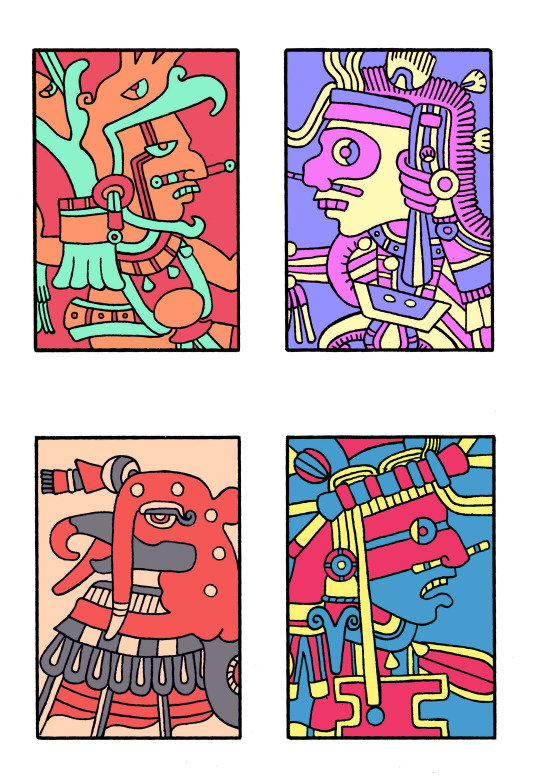
Aztec Gods: Centeotl - Mixcoatl - Chalchiuhtotolin - Xiuhtecuhtli
#aztec gods#aztec mythology#aztec#aztec culture#mesoamerica#azteca#xiuhtecuhtl#centeotl#mixcoatl#chalchiuhtotolin#myth#mythos#mythological gods
750 notes
·
View notes
Text
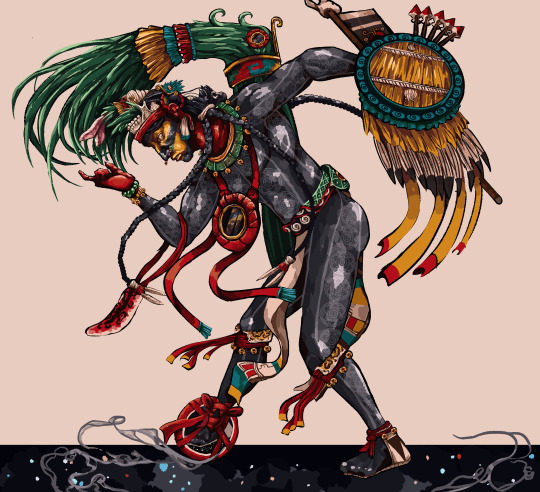
Smoking Mirror
#digital art#my art#artists on tumblr#digital artist#art#trans artist#illustration#mythology and folklore#mesoamerica#aztec gods#aztec#tezcatlipoca
64 notes
·
View notes